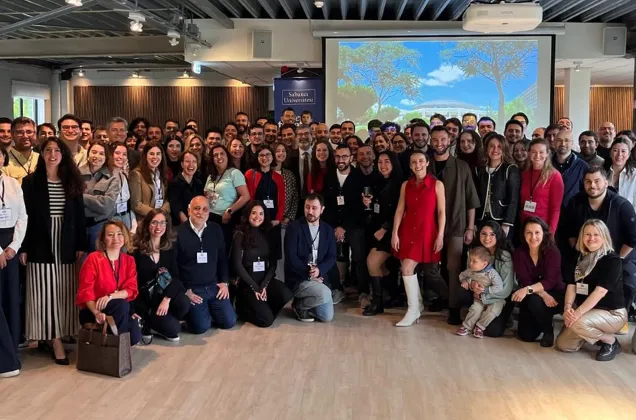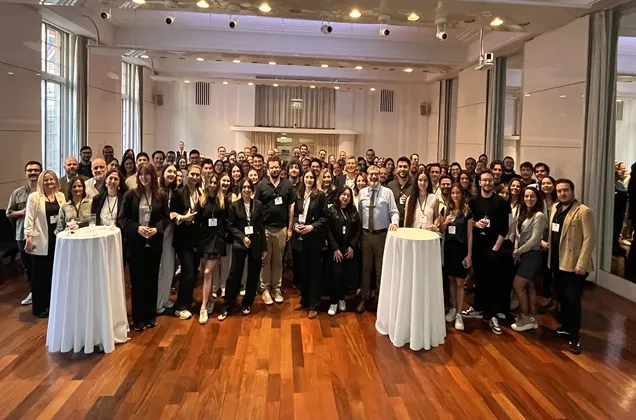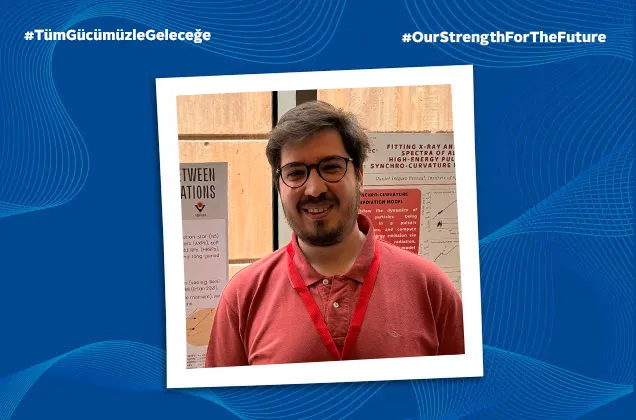11/08/2014
Our student Nilay Düzen writes on the Tour of SUNUM with Tolga Sütlü ’04 at the 2014 Homecoming
Products containing nanoparticles, smart materials, artificial organs, artificial intelligence, touchscreens, pocket-sized computers, self-cleaning buildings, cures for terminal diseases, new ideas for using energy… All these mind-boggling technologies are undeniably parts of our lives in the new century. Merely following and using this rapidly-developing world of innovation is no longer an advantage though. The key to the future glints in the hands of the people, institutions and countries that contribute the most to this world, and invest the most time, work and money. How, then, is our situation in this world of fierce technological and scientific competition? For instance, how well do we know SUNUM (Sabancı University Nanotechnology Research and Application Center) which is practically next door? Do we have any idea about what happens in this building which hosts projects that will shape the future? The Homecoming Organization Committee must have asked the same questions, because they arranged for a tour of SUNUM –a magnificent building that towers on what used to be a parking lot until 2010– for all alumni. Better yet, this tour was guided by Tolga Sütlü, one of the first graduates of the Biology and Bioengineering Program, a key scientist in artificial organ transplantation who is recognized nationally and globally, and a scholar who is part of the reverse intellectual migration movement. Here are my notes on the tour of SUNUM:
We gathered in front of Fasshane for the tour, and entered SUNUM led by Tolga Hoca. Our first impression was that of a sci-fi movie set with the architecture and the general environment. SUNUM Director Volkan Özgüz greeted us and started giving an overview. The nanotechnology building’s architecture is inspired by the human cell. Helical stairs, a large column at the core of the building, diamond-shaped panes that are reminiscent of the cell membrane, and the cylindrical structure that harkens to carbon tubes, the building block of nanotechnology, all tell us a story. Volkan Bey cannot emphasize enough that SUNUM is a very “green” building. In fact, it is the only building in Turkey that has received both UK and US certification, and has 155 solar panels to contribute to its heat-energy exchange. Although some trees were cut during construction, the building has been surrounded by plants endemic to the Marmara region. Inside, SUNUM occupies an area of 7368 square meters, has 12 laboratories on 1500 square meters, clean rooms measuring 850 square meters, and 2400 square meters of office space and common areas. SUNUM competes with the leading research centers abroad, and its first and overarching objective is to provide ample research space and facilities for nanotechnology applications in material sciences, food safety and agriculture, medicine, and biology. The plan is to reduce Turkey’s import-dependency in these areas and make groundbreaking inventions. Every piece of technological equipment imaginable has been procured, from atomic and sub-atomic capable electron microscopes to fast DNA compilers, and systems that create metal or semiconductor sheets that are 1 to 2 atoms thick. We walked through the long corridors of the building to have a better idea of the labs.
The first ones we saw were bioengineering and tissue engineering labs. Tolga Hoca told us all about them: These labs are equipped with double doors and pressurization systems, and the work here concentrates on human cells, human cell waste, immune cells that may be used in cancer studies, and artificial organs. The critical projects are the production of tissues as an alternative to animal testing of drugs, the growth of cells into artificial limbs, and the production of live tissue by 3D printing. Another laboratory works on the wheat genome project, which is regarded one of the most ambitious projects to help alleviate the issue of nutrition globally. Another noteworthy project in this section is the EU Flagship Human Brain Project, which is one of the most ambitious neuroscience projects so far, is composed of over 130 prestigious research institutions, and is funded by the EU. Sabancı University is the only Turkish partner of the project, and hosts efforts on the understanding of the human brain, and the guidance of health and informatics research accordingly.
In addition to biosciences, SUNUM also hosts groundbreaking projects in material sciences, physics and chemistry. One such effort is the Graphene Project. Graphene is a new material that won Nobels to its discoverers – it is the only two-dimensional atomic crystal known in the world, and is both the thinnest material and the hardest substance on earth (even lighter and harder than diamond!). It is an excellent conductor of heat and electricity, and is extremely flexible, which make Graphene one of the most crucial factors in revolutionary research on everything from fuel cells to DNA sequencing, biotechnological and medical applications, and tissue engineering. The efforts at SUNUM focus on the use of this material as a fuel cell.
This research portfolio is supported by energy and surface chemistry, advanced microscopy and cell culture, and echoless room facilities at SUNUM. The Clean Room is one of the most interesting places. This is a room designed for nanoelectronic and microelectronic experiments, and understandably we were only able to view it from the outside. The entire air in the room is circulated through special filters 20 times an hour to remove all dust and particles. The foundation of the room is separate from that of the facility, and is placed in a dedicated pit to protect against external factors. The room houses 20 different pieces of equipment, and to go in you must change your clothes and pass through a gate that cleans all the dust off of you.
Our tour ends there and we go out into the courtyard. We are speechless – except everyone hopes for the best outcomes and thanks everybody who works here on million-dollar projects to help us become a leader of technology and science rather than a mere follower.
Nilay Düzen
Student, Material Sciences and Engineering




